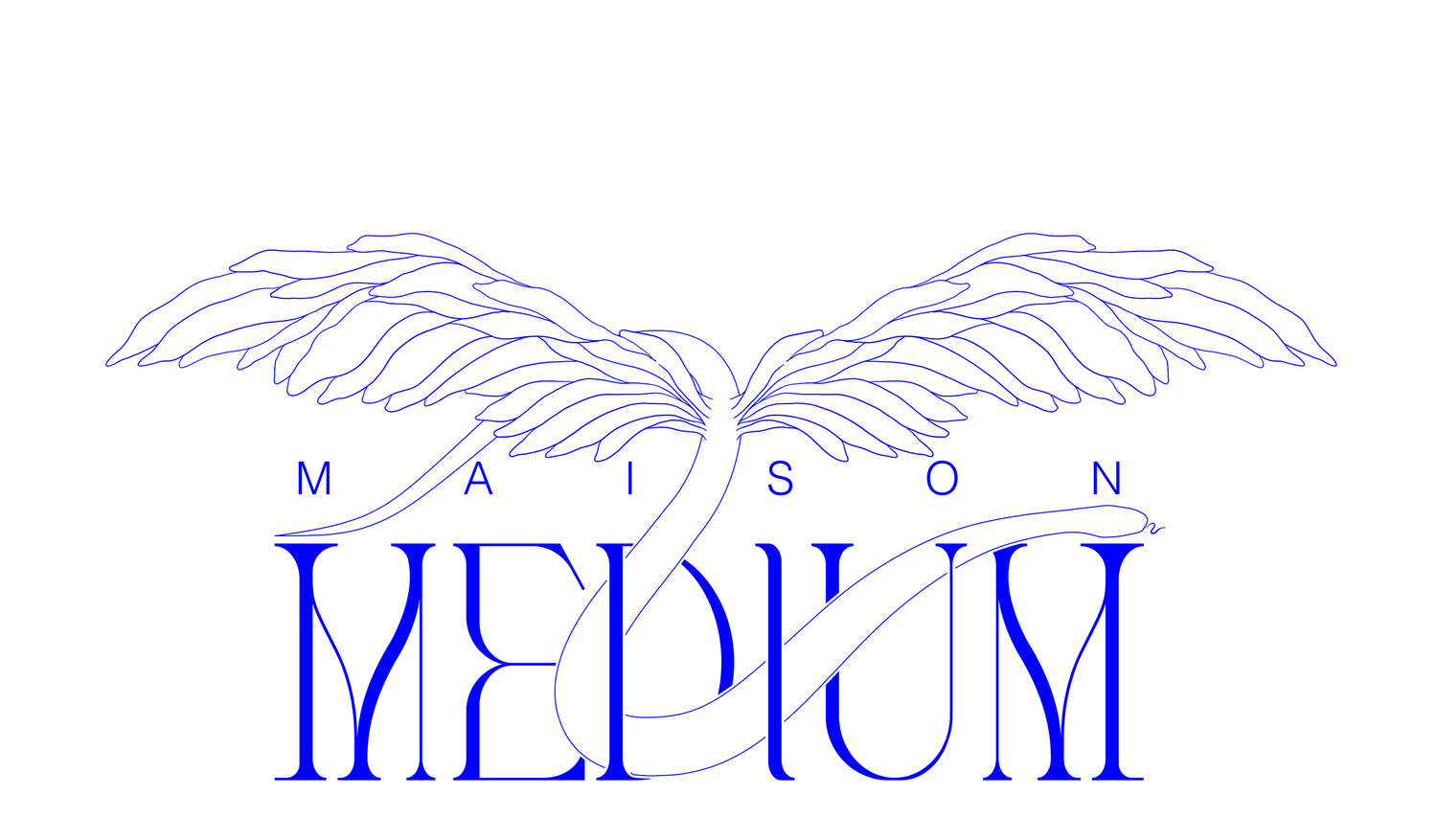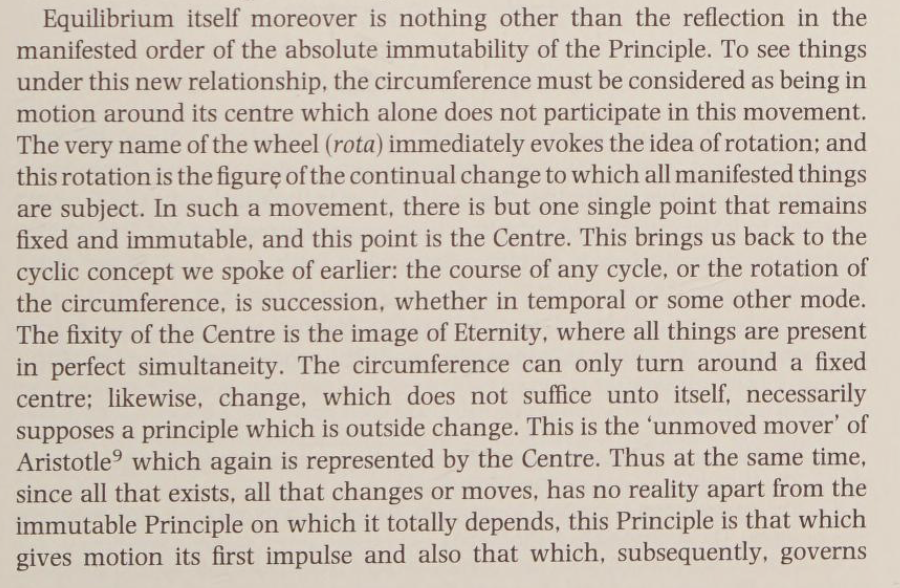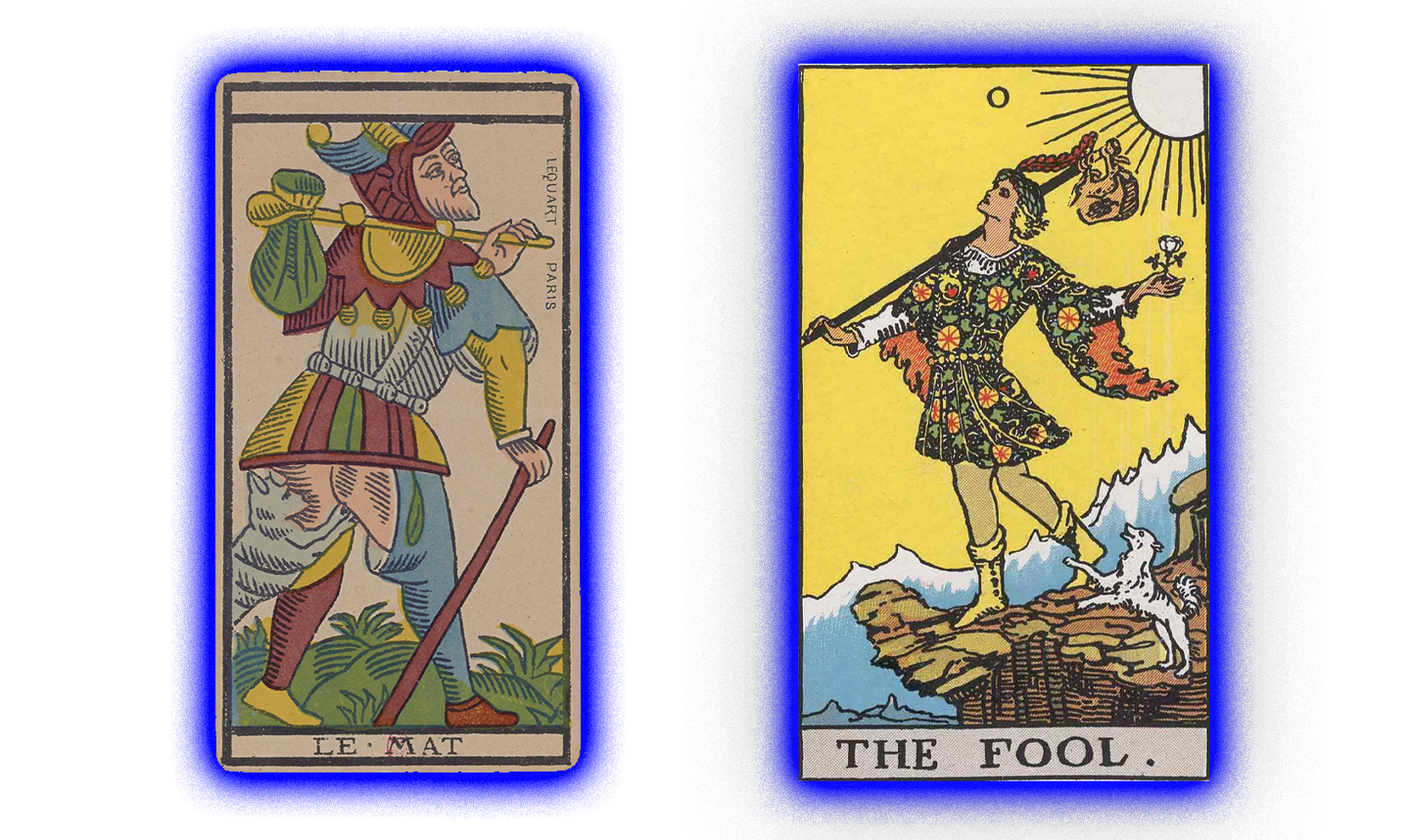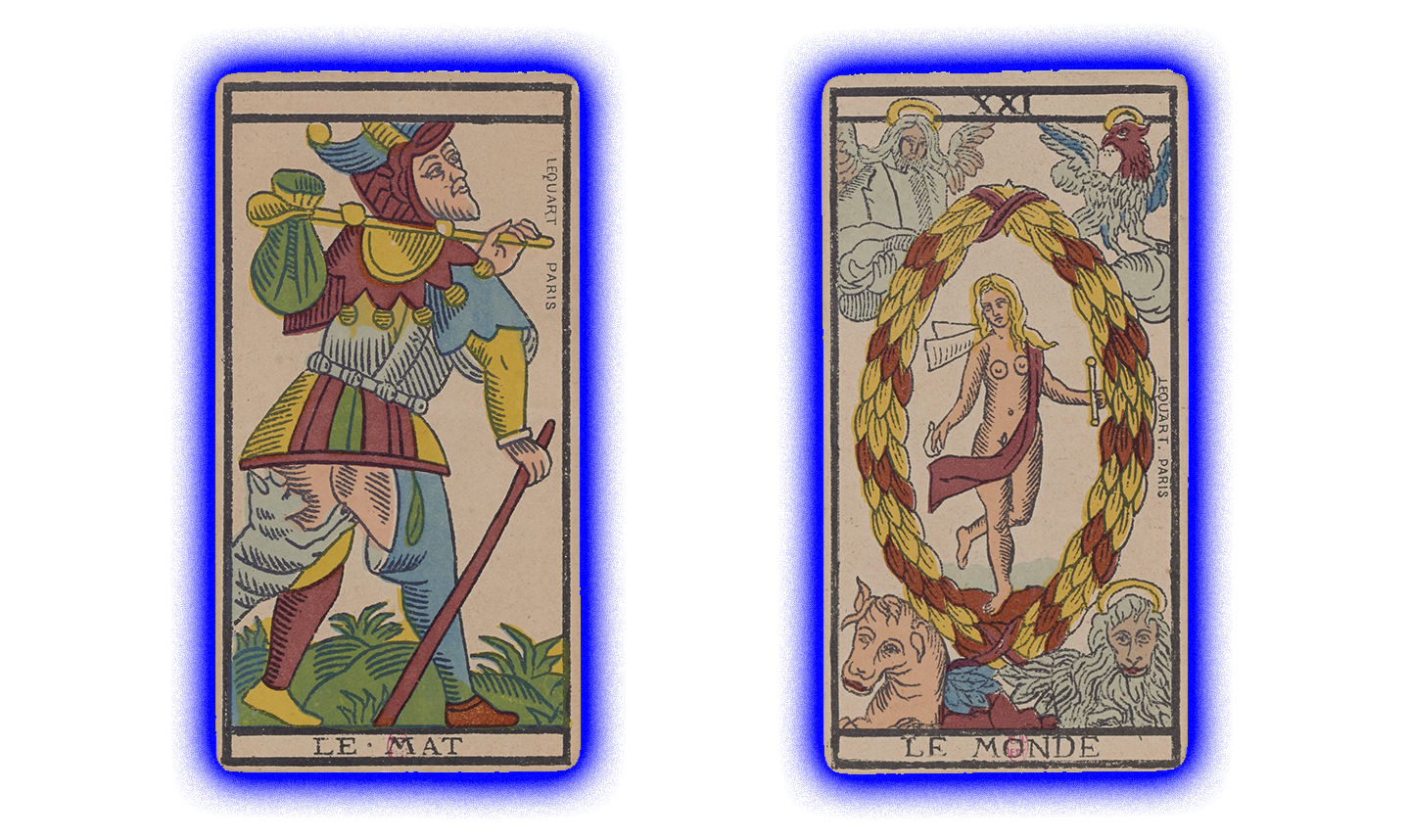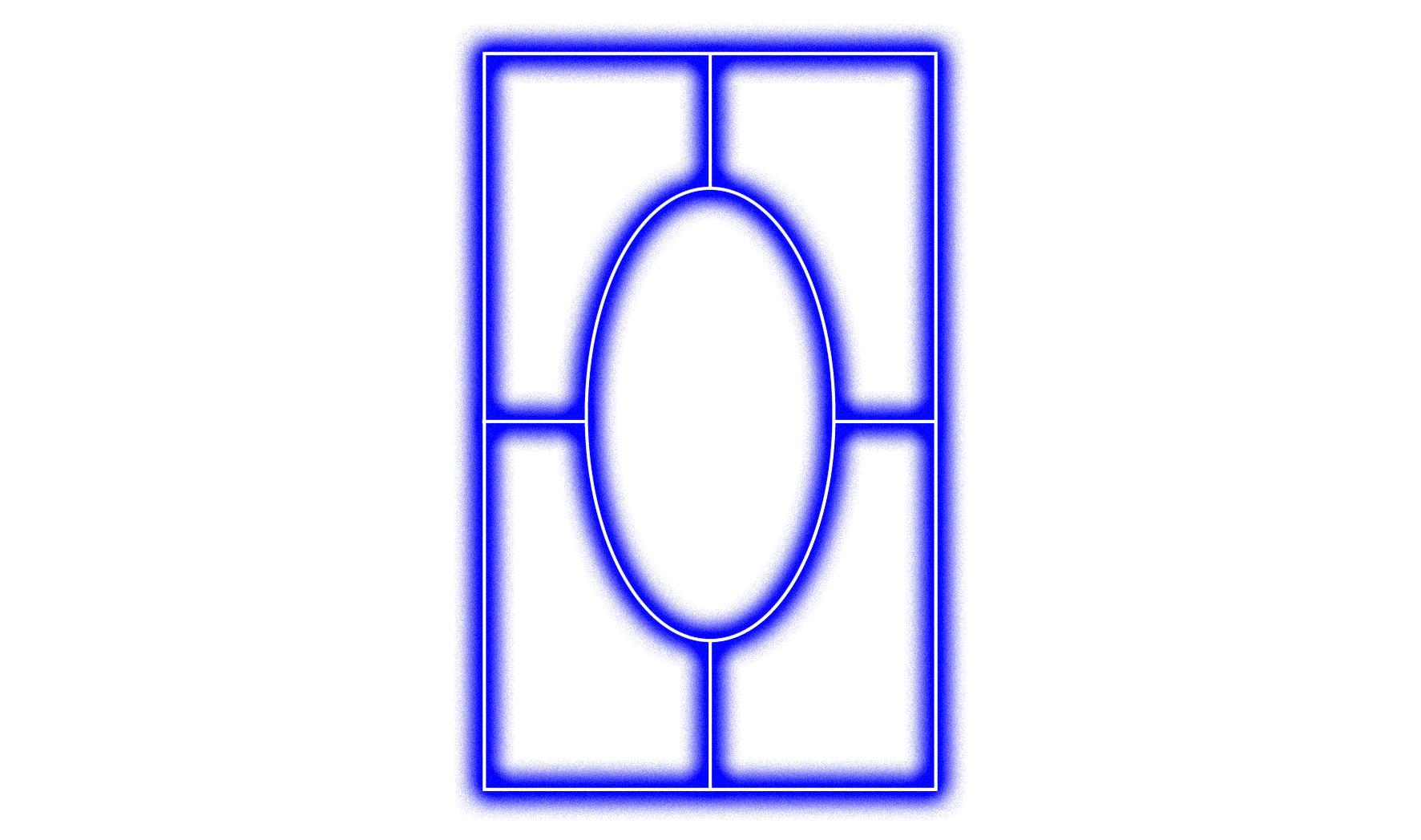On the Fool, the World, the Centre and the Circumference
Monarch Meds #3
Monarch meds (meditations) is a series where I instinctively select two books and then, in a stroke of serendipity, open each to a random page. Similar to Tarot, I would consider this a kind of “designed chance” experience. The experience of pulling out the deck with the intension of doing a reading is designed, and then the subsequent chance event occurs. The passages chosen by chance are taken delightfully out of context, with the purpose of bridging them (conceptually or otherwise) to hopefully generate something new.
As I am currently writing passages about The Fool for the Tarot: Living Study section, so I decided that it was fitting for this iteration of Monarch Meds to relate the randomly chosen passage to ‘The Fool’ card in the Tarot.
Passage #1
—Fundamental Symbols: the Universal language of Sacred Science, René Guénon (p.49)
“Passage” #2 - The Fool card in the Tarot
The passage relating to the point (the centre) and the circle (the circumference) within “Fundamental Symbols” made me think of the spatial structure of the Tarot that Alejandro Jodorowsky presents in his book, The Way of the Tarot. He suggests a spatial structure in which the Fool card and the World card are the bookends of the entire series:
In this order, the Fool and the World represent the Alpha and Omega. As Jodorowsky writes, the Fool and the World are “the two points between which all possibilities are deployed. The Fool would therefore be a perpetual beginning and The World an infinite culmination.”
In the context of the centre and the circumference, we can see how both of these archetypes could be representative of the beginning and culmination. The centre, as René Guénon writes, is the dimensionless point of departure:
“Symbolically, the central point is the Principle, it is pure Being; and the space which it fills by its radiation and which itself only exists by that same radiation (the fiat lux of Genesis) without which it would be only 'privation' and nothingness, is the world in the widest sense of the word, the totality of all the beings and all the states of existence that constitute universal manifestation.”
For further context, the Passage #1 by Guénon is speaking about the below symbol:
⊙
Like all good symbols, all aspects of the symbol above are significant: the centre and the circumference are interdependent. In the context of the Tarot, the World and the Fool card are both expressing idea of being the centre and the circumference simultaneously. As Guénon points out, the circumference and the centre require each other; without the fixed centre, the circumference cannot rotate, as the centre is the “unmoved mover” for the circumference. Without the circumference, there is nothing for the centre to be a centre of—it would just be a random point in space without definition. The circumference literally defines where and what the centre is. To that avail, what Guénon is suggesting is that the classical symbol for the Sun, as seen above, is actually more of a World Axis or Polar symbol rather than a Solar symbol. This is because the symbol itself evokes the idea of rotation or wheel, which is most akin to how we observe the heavens’ rotation around the Pole Star.
If you think about it, there is no wrong interpretation of the symbol (Solar or Polar), it’s just a matter of what perspective you’re choosing to observe it from. If we take the Solar perspective, and that the Earth is revolving around the Sun, the Sun is the centre point and the Earth is the exterior circumference. If we take the Polar perspective, the centre would be the World Axis, or Earth itself, and the circumference could be the rest of the heavens which revolve around the Pole Star.
How does this relate to the Fool card?
This is quite interesting in the context of the Fool and the World. As mentioned, they both have centre and circumference symbolism within them (in both the Marseille and Rider-Waite decks). The Fool is the unnumbered card in the Marseille deck, and the zero card in the Rider-Waite deck. Whether it is zero or unnumbered, the Fool is often considered to be a “point of departure” for the entire Major Arcana. The zero, having no value, is dimensionless—literally a point that is immoveable. Even mathematically the zero always “returns to itself”—everything multiplied by zero is zero. Dividing by zero is a whole other problem with a similar ending. Zero, too, is considered the axis of the number line—the dimensionless point which separates the negative numbers from the positive ones. As the Fool embodies these characteristics, it’s easy to see the centre symbolism associated with the Fool archetype. However, when we look at the Fool himself, he is literally departing—moving toward something. He is not fixed and immovable—and it is for this initial motion or action which draws to mind “wheel” symbolism—or circumference. The meaning of the Fool is therefore dual in the context of the centre and the circumference—as Jodorovsky points out—“this is how the Bible and numerous divine cosmogonies present the divine creative energy: an activity without limits or precedent that has emerged from a nothingness that knows neither time nor space.”
The Fool is also literally carrying a pole, the top of which holds a mysterious bag presumably with all of his possessions…or maybe nothing at all? Like Schrodinger's cat, the bag could either be empty or contain everything within it, but as it’s true contents are concealed, both of these states are true simultaneously. One could interpret the pole of the Fool as being the World Axis, atop of which lie the mysteries of the heavens above. Perhaps the name for the Fool comes from his foolish nature of searching for the mysteries of the world, while not realizing he has been carrying the answers with him the whole time (perhaps a general metaphor for human existence). It is also within the Fool’s expression and movement to suggest that wherever he goes, the mysteries or secrets that lie within the bag atop the pole will follow him there.
When we compare the dual nature of the Fool archetype to Passage #1, we can deduce that the Fool embodies the concept of the centre taking a leap of faith toward the action and movement principles that the circumference represents.
Last but not least…
The World card is the culmination. Unlike the Fool, the World has a defined number of “XXI”—it’s place is clearly the last of the Major Arcana series. In the World card, we see a central woman within an oval surrounded by 4 beings reminiscent of the 4 fixed signs of the zodiac: the Bull (Taurus), the Lion (Leo), the Eagle (one symbol of Scorpio), the Angel (Aquarius). As Jodorowsky writes, “…this female figure dancing in the centre of the oval could be an allegory of the soul of the world, into which The Fool breathes his cosmic energy. The four figures surrounding her can then be interpreted as the four constituent elements of reality, the four cardinal points, and the four comers of the real world. In many cultures the known world is defined as a four-sided form, a square or a cross, to which is added a fifth central element, an axis or meeting point that joins and surpasses the four directions.”
This is suggesting that when comparing the World, the centre and the circumference, the point and the circumference actually create a 5-frame system. The circle represents the four corners of the earth, and the central point is the 5th element: the essence. This symbolism is also reminiscent of the quincunx, where the four points surround the central point—or axis—which balances the whole system. This imagery relates once again to the Fool card, as another name for the esoteric title of the Fool is “the Spirit of Aether”, which is of course the name for the 5th element outside of the 4 cardinal elements of Air, Earth, Fire and Water.
The card’s structure, as seen in the linework representation above, is reminiscent of the way Jesus is sometimes depicted within the vesica-piscis frame, such as the portal of the Royal portal in Chatre Cathedral:
The World card of course replaces Jesus with the dancing woman. Though she is seen in motion, with one foot behind the other and the ribbon following in motion too, one expects her to stay within the confines of the earthly ring. She seems to float within the centre of the card, and her movement suggests she might be spinning within the centre of the oval ring, almost becoming the world axis point herself. But the World card is not just about the woman, but the totality of all the elements combined. Thus, the glyph of the Sun or Pole is apt in this sense—⊙—as the card is a clear representation of the point as well as the circumference created from the central “element”. We create the boundaries we live within—we are both a spirit and material body at once. The World card can view this as being something with infinite potential or infinite limitation. The World card is truly a squared circle—the material finite world mixing with the infinite edges of the circle.
The World card symbolizes the ultimate framework within which life unfolds. The Saturnine influence is reflected in the card’s encompassing circle, reminiscent of the wheel of time and the cycles of existence. This boundary, while representing completion and containment, also poses as a paradoxical gateway to new beginnings, much like the zero of the Fool, which symbolizes both nothingness and the seed of all potential.
The central figure, depicted within the vesica piscis-like oval, emphasizes the dual nature of being both a point and a circumference. She dances at the axis of the world, potentially limiting yet also defining the dance of life. Here, the World is portrayed not just as a being but as a state of being, embodying both the spirit and the material, the infinite and the finite. The boundary around the centre point could be considered a limitation, or perhaps a symbol of the zero; of all potential. This double interpretation also brings to mind the ideas that limitations or boundaries can open up new possibilities or ideas, it simply depends on your perspective.
This synthesis of the point and the circumference brings us back to the central motif of the Tarot’s narrative arc overall: that the journey from the Fool to the World is one of expansion from a singular point to an all-encompassing realization, where the soul discovers its own boundaries as horizons to be transcended, exploring limitless potential within the confines of the material.
